The landscapes between photography and painting by Dorothy Simpson Krause
Dorothy Simpson Krause is an American artist who works mainly with collage, combining traditional materials with digital techniques.
She is not a photographer, but she makes intensive use of photography in her collage. Typically her work would be considered non-photographic, and classified under some form of visual art but not “Photography”. For a long time I have been tried to convince photographers that the border between photographic image and other visual arts is not as sharp and it is not easy to determine what photography is and what is not. Indeed, the question itself has no real sense, because photography is an ambiguous media, photography is actually a term commonly used to group practices also substantially different between them. For this reason I’m happy to have on Camera Obscura such an artist, that move the border of photo art.
Furthermore Dorothy Simpson Krause was one of the first artist to use computers and digital printing systems, and I was interested in discussing the use of informatics in the world of art. Always photographers, with a few well known exceptions like Giacomelli, went hand in hand not only with technic, as in any form of art, but also with technology. Despite this, computers and digital technology, until a very short time ago, where seen in general with some diffidence, qualitative doubts but especially testarde crusades against an unknown instrument.
Finally, some recent works of Dorothy Simpson Krause remember very much the appearance of some images obtained using historical process. The first time that I came across iher work, I thought ithey where gum bichromate prints. As gum is one of my favorite techniques I have a special attraction for images of this type.
Although the work of this American artist is much more complex, only a few of these works halfway between painting and photography will accompany the interview.
Fabiano Busdraghi: You are considered one of the pioneers in the use of computers in art. Usually it is a tool employed in science and technology, while people who have an artistic or literary formation prefer less technological instruments (but in the younger generation, this distinction is less marked). Do you believe it is still the case? Do you think that the spread of computer is essential for art in the future?
Dorothy Simpson Krause: The computer, like the wheel, is a universal tool. It can replicate other media and materials and also be used in unique ways. In the photography world digital seems to be replacing film, but there will always be artists who choose to work with processes that produce work they find rewarding – from platinum prints to Holga prints.
Fabiano Busdraghi: One of the reasons informatics is held away from a creative use is linked with a sort of contradictory relation between simplicity and complexity in art. Certain manipulations are made extremely simpler by computers. Today one might think that the artists finally have the freedom of expression that they searched in the past, without the filter and limit of technical difficulties. At the same time, however, democratization of execution procedures may appear to reduce the value of art craft.
For example, today it is much more difficult to find a posterized photography in a gallery, and one of the reasons is that this effect can be obtained in seconds with Photoshop. Sometimes it seems that complex, difficult, long and slow procedures add value to a creative work.
I am not saying that the digital manipulation is simple, the use of computers has its difficulties and its learning curve. But I wonder if the complexity of the technique used to obtain a print add value to it. Has the spread of the computers removed the “aura” from part of the artistic productions of the past? Is it leading to an appreciation of a masterwork more for its intrinsic qualities and less for the external characteristics of the object?
Dorothy Simpson Krause: I don’t think it matters how a work is produced. It’s the final product that is important.
One complex project I recently completed was as the von Hess Visiting Artist at The University of the Arts Borowsky Center, in Philadelphia. I used silver, gold and black metallic inks on the Heidelberg Offset Lithography press with a chine colle inkjet print on sheer paper.
I began the metallic offset portion of the print by scanning a metal and plaster surface and reshaping it in Photoshop to match the press dimensions. I chose a file to inset from a series of work in process called Climate Change.
Before leaving my studio, I printed the landscapes to be chine colle insets on the HP Z3100 inkjet printer on sheer tissue. I divided the Photoshop file into three “separations” which would become the silver, gold and black offset plates. At the Borowsky Center, Lori Spencer, the Master Printer, prepared the film, made the offset plates and printed the offset image onto which the silk tissue was adhered. A final touch of bright orange oil pastel was applied on top of two of the rivets in the image.
The image size is 24″ x 17.5″ on Arches hotpress 28″ x 20″. In an edition of 100, with 6 artist proofs, the final piece, “Black Gold”, references our dependence on oil and the damage to the environment caused by the burning of fossil fuels.
Fabiano Busdraghi: Once you said that digital manipulation of images opens the same opportunities that programs text gave to writers: the chance to correct and edit their text until they reach the desired result. This means that in your work do you start from a precise idea, or if you want inspiration, and begin to pull it out gradually, as sculptures digging in a block of marble? Or is the serendipidity an important part of your work, you experiment leaving the image evolving until the case does play its game?
Dorothy Simpson Krause: I usually work in series and have a sense of what I want to use for imagery and how I want to print the images but serendipity plays a huge part in my work with many “happy accidents” leading to interesting final work.
For example, Studs was printed onto a sheet of old patinaed copper, nailed to a 24” square plywood panel using the Durst Rho160W flat-bed printer. Since the Durst uses white ink, a “mask” was made for printing white spot-color and gradations. In the final print, the copper is clearly visible where ink was minimal and, in some areas, the copper is completely covered by the highly pigmented color on top of the white UV ink. Actual nails enhanced with black wax and silver pigment were nailed into the plywood/ copper surface of the print.
If things don’t work as expected, I paint over or sand off the surface or put the piece away for another use at another time.
Fabiano Busdraghi: But let go back to the use of computers in art. Another reason being cited to justify the rejection of their use is that they are aseptic, cold, rational and really abstract instruments. Sometimes it’s nice to step back to the manual aspect of hand made objects, the interaction with raw materials, the contact with reality. In my case for example, I shoot and edit digitally, because this freedom of expression is now irreplaceable for me, but then I print a large fraction of my photographies in the darkroom using historical processes. In addition to the final result, the contact with materials gives me a purely physical pleasure. In your case you use a mixture of advanced technology and simple and humble materials, hand painted inkjet prints, collage, etc. Do you share the need of a direct contact with objects? Is it purely related to the final result, or you have another exigence?
Dorothy Simpson Krause: It’s not the tool but how you choose to use it that creates the final result. I dislike the flat quality some straight prints on paper but the possibilities for combining materials and processes are endless and seductive.
Fabiano Busdraghi: Many of your works look like old prints and they remember me gum bichromate prints, for example some of Keith Gerling works. This ancient style, used surface, presence of scratches, is it a way to retrieve contact with materials, shorten the distance inserted by informatics and technology? Or rather an aesthetic choice to work on memory, thoughts, dreams?
Dorothy Simpson Krause: Keith’s images are haunting, but I would find the process of gum bichromate tedious and repetitive. I’m easily bored and if I’ve done something once, I’m looking for ways to take it to a new level. However, reinventing the wheel for every exhibition can be a bit too challenging when things don’t work as expected.
Fabiano Busdraghi: You often produce hand crafted books of your works. It is a topic that interests me particularly, because a I follow a course of ancient binding techniques. What does a hand made book means to you? How is it different than a picture hanging on a wall?
Dorothy Simpson Krause: My involvement with books began with travel journals, visual records of experiences. I wrote, collaged and drew into them – it was especially nice working for a few weeks with a medium that didn’t crash or require trouble-shooting. When I returned to my studio, I scanned the book pages into the computer and combined them with photographs taken on the trip.
Later, books evolved into places to experiment with concepts, make political statements and take work that wasn’t successful to another level. They have an intimacy, pacing and time-based quality that wall-hanging work lacks. The small format is also appealing since some of my large work is very heavy and requires two people to lift.
Fabiano Busdraghi: I noticed that in the past you worked a lot with collage, photomontage, images that are clearly composite and issues from your mind. Over the last years instead you are producing pictures that have a more direct photographic look. Of course, you still use mixed materials, the overlap of hand painting, you print on unusual surfaces, and so on, but undeniably your images resemble more to those obtained with certain printing techniques that have a pictorial look, but are still straight photographic. What does this evolution in your work mean? Were you concerned in the past with a more symbolist approach, while today you are more interested in a impressionist representation of reality?
Dorothy Simpson Krause: My work seems to be cyclical. I find myself referencing past ways of working as I evolve. The work you call “straight photographic” has only a passing resemblance to the photograph on which it is based and almost all of the series digitally combines photographs and paintings in the final pieces. The output devices and substrates are also varied.
Fabiano Busdraghi: In the series Fragile Beauty and Sacred Spaces you have worked on the photographies by Donna Rosetti Bailey and Viola Kaumlen, reinventing them using several techniques. Is it the same for the series Viewpoint or you shoot the pictures personally? Are these photographies originally designed to be printed in this way? Or this is a special edition, and there are also versions printed in a traditional way? What are the implications of working on someone else photographies?
Dorothy Simpson Krause: The photographs in the Viewpoint series are mine but I’m not a photographer and I don’t like to shoot. I find the camera distances me from the experience.
Bailey is a pastel artist who takes photographs to use as source material for her pastels. Kaumlen is a photographer who prints her own work. In both cases I used images they were not using and in a way they would not have used them. By the time I have manipulated them in Photoshop and printed them on various substrates the final piece may bear little resemblance to the source image.
The photographic image, for me, is a part of the collage process. The images in these series came from various times and places and were brought together conceptually. For the most part, unless they are straight prints on a custom substrate, aluminum or Dibond, they are one-of-a-kind. The editioned prints are usually a very small number. Posters on gloss paper would be the only re-prints of any of my images.
Fabiano Busdraghi: During your career you travel a lot, often staying abroad for some time. How important is the journey in your artistic activity?
Dorothy Simpson Krause: I travel (and take workshops) to provide me with new experiences. Some series, like Vietnam Journal, Journey of the Spirit, Cuba and Promised Land couldn’t have been done without the trips. My recent work, however, is both global and local, focusing on the land and how our increasing population density is impacting the planet.
Fabiano Busdraghi: Can yu tell some word about one of your images?
Dorothy Simpson Krause: Seeds began with a photograph taken from the deck of my home, across the marsh and North River. It was combined with a painting in Photoshop and the color radically altered. It was printed 24” x 24” in an edition of 4 on a custom substrate made from textured spunbonded polyester coated with metallic pigment and inkAID precoat. Part of the series “Sacred Spaces”, it was created after the collapse of the World Trade Center when I needed to find nearby places that could still the mind, nourish the soul and provide a refuge for reflection and contemplation.
Fabiano Busdraghi: Can you tell me about a contemporary photographer you especially like, and why you love his work?
Dorothy Simpson Krause: I find Sebastião Salgado’s work powerful and moving. I also appreciate some of the innovative presentations of Mike e Doug Starn.
Fabiano Busdraghi: What book are you currently reading? What music listening? What are your favorite movies?
Dorothy Simpson Krause: I’m reading Audrey Neffenegger’s “The Time Traveler’s Wife”. If I listen to music it’s classical or jazz and functions as background until I find it distracting. I love the films of Peter Greenaway and Merchant-Ivory – I’m looking forward to “Love in the Time of Cholera”.
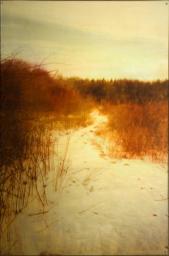
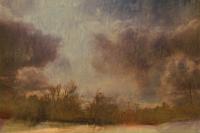
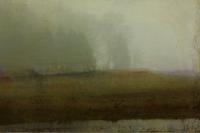
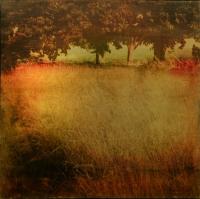
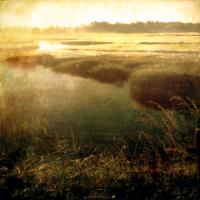
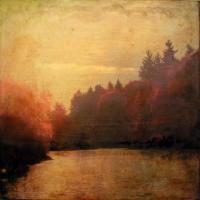
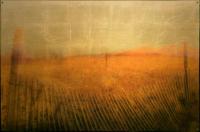
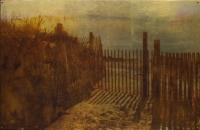
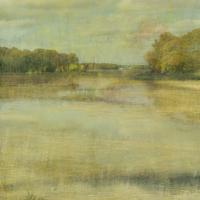
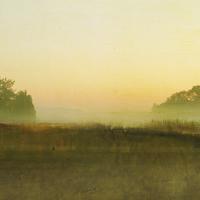
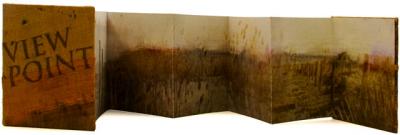
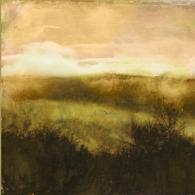
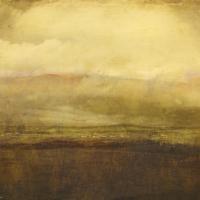
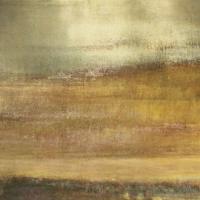
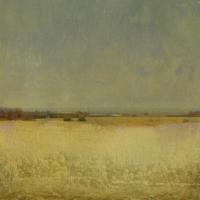





Camera Obscura » Vernici per stampe a getto di inchiostro su carta artistica
said, July 26, 2008 @ 9:11 pm :
[...] per esempio Inkaid, una specie di vernice di cui mi ha parlato Dorothy Simpson Krause nella sua intervista e che, almeno così promettono i costruttori, permette di stampare su ogni [...]
Danx
said, May 30, 2009 @ 11:50 am :
Uhm se le gallerie non cercano più foto con certi effetti, poichè realizzabili in pochi minuti con Photoshop, allora la fotografia, anche quella che non ha riscontri con la realtà, è considerata artigianato e non arte…
Vernici per stampe a getto di inchiostro su carta artistica
said, June 12, 2009 @ 8:36 am :
[...] products, such as Inkaid, a sort of paint which I was talked by Dorothy Simpson Krause in her interview and that, at least the producers say it, allows to print on each [...]
Linda Brower
said, November 25, 2010 @ 10:37 pm :
I have an oil painting of trees and water, very colourful and very thick brush strokes. Signed Dorothy Simpson. Cand you tell me any information about this.Thanks
Fabiano Busdraghi
said, November 26, 2010 @ 12:22 am :
Linda, I’m afraid I can not help. You can try asking Dorothy Simpson Krause, you will find the mail adress on her site.